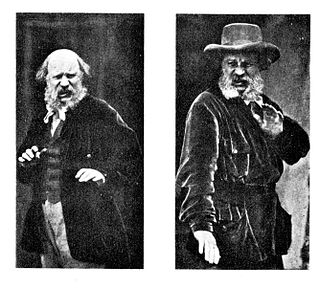Related Research Articles

Acoustics is a branch of physics that deals with the study of mechanical waves in gases, liquids, and solids including topics such as vibration, sound, ultrasound and infrasound. A scientist who works in the field of acoustics is an acoustician while someone working in the field of acoustics technology may be called an acoustical engineer. The application of acoustics is present in almost all aspects of modern society with the most obvious being the audio and noise control industries.

Pitch is a perceptual property that allows sounds to be ordered on a frequency-related scale, or more commonly, pitch is the quality that makes it possible to judge sounds as "higher" and "lower" in the sense associated with musical melodies. Pitch is a major auditory attribute of musical tones, along with duration, loudness, and timbre.

A blackboard or a chalkboard is a reusable writing surface on which text or drawings are made with sticks of calcium sulphate or calcium carbonate, known, when used for this purpose, as chalk. Blackboards were originally made of smooth, thin sheets of black or dark grey slate stone.

The pitch being perceived with the first harmonic being absent in the waveform is called the missing fundamental phenomenon.

Acoustical engineering is the branch of engineering dealing with sound and vibration. It includes the application of acoustics, the science of sound and vibration, in technology. Acoustical engineers are typically concerned with the design, analysis and control of sound.
In animals, including humans, the startle response is a largely unconscious defensive response to sudden or threatening stimuli, such as sudden noise or sharp movement, and is associated with negative affect. Usually the onset of the startle response is a startle reflex reaction. The startle reflex is a brainstem reflectory reaction (reflex) that serves to protect vulnerable parts, such as the back of the neck and the eyes (eyeblink) and facilitates escape from sudden stimuli. It is found across many different species, throughout all stages of life. A variety of responses may occur depending on the affected individual's emotional state, body posture, preparation for execution of a motor task, or other activities. The startle response is implicated in the formation of specific phobias.
The psychology of music, or music psychology, may be regarded as a branch of psychology, cognitive science, neuroscience, and/or musicology. It aims to explain and understand musical behaviour and experience, including the processes through which music is perceived, created, responded to, and incorporated into everyday life. Modern psychology of music is primarily empirical; its knowledge tends to advance on the basis of interpretations of data collected by systematic observation of and interaction with human participants. The field has practical relevance for many areas, including music performance, composition, education, criticism, and therapy, as well as investigations of human attitude, skill, performance, intelligence, creativity, and social behavior.
Surprise is a rapid, fleeting, mental and physiological state. It is related to the startle response experienced by animals and humans as the result of an unexpected event.
Noise, vibration, and harshness (NVH), also known as noise and vibration (N&V), is the study and modification of the noise and vibration characteristics of vehicles, particularly cars and trucks. While noise and vibration can be readily measured, harshness is a subjective quality, and is measured either via jury evaluations, or with analytical tools that can provide results reflecting human subjective impressions. The latter tools belong to the field psychoacoustics.
The following outline is provided as an overview of and topical guide to acoustics:

In physics, sound is a vibration that propagates as an acoustic wave through a transmission medium such as a gas, liquid or solid. In human physiology and psychology, sound is the reception of such waves and their perception by the brain. Only acoustic waves that have frequencies lying between about 20 Hz and 20 kHz, the audio frequency range, elicit an auditory percept in humans. In air at atmospheric pressure, these represent sound waves with wavelengths of 17 meters (56 ft) to 1.7 centimeters (0.67 in). Sound waves above 20 kHz are known as ultrasound and are not audible to humans. Sound waves below 20 Hz are known as infrasound. Different animal species have varying hearing ranges, allowing some to even hear ultrasounds.

William M. Hartmann is a noted physicist, psychoacoustician, author, and former president of the Acoustical Society of America. His major contributions in psychoacoustics are in pitch perception, binaural hearing, and sound localization. Working with junior colleagues, he discovered several major pitch effects: the binaural edge pitch, the binaural coherence edge pitch, the pitch shifts of mistuned harmonics, and the harmonic unmasking effect. His textbook, Signals, Sound and Sensation, is widely used in courses on psychoacoustics. He is currently a professor of physics at Michigan State University.

Disgust is an emotional response of rejection or revulsion to something potentially contagious or something considered offensive, distasteful or unpleasant. In The Expression of the Emotions in Man and Animals, Charles Darwin wrote that disgust is a sensation that refers to something revolting. Disgust is experienced primarily in relation to the sense of taste, and secondarily to anything which causes a similar feeling by sense of smell, touch, or vision. Musically sensitive people may even be disgusted by the cacophony of inharmonious sounds. Research has continually proven a relationship between disgust and anxiety disorders such as arachnophobia, blood-injection-injury type phobias, and contamination fear related obsessive–compulsive disorder.
Psychoacoustics is the branch of psychophysics involving the scientific study of the perception of sound by the human auditory system. It is the branch of science studying the psychological responses associated with sound including noise, speech, and music. Psychoacoustics is an interdisciplinary field including psychology, acoustics, electronic engineering, physics, biology, physiology, and computer science.

Research into music and emotion seeks to understand the psychological relationship between human affect and music. The field, a branch of music psychology, covers numerous areas of study, including the nature of emotional reactions to music, how characteristics of the listener may determine which emotions are felt, and which components of a musical composition or performance may elicit certain reactions.

Saccular acoustic sensitivity is a measurement of the ear's affectability to sound. The saccule's normal function is to keep the body balanced, but it is believed to have some hearing function for special frequencies and tones. Saccular acoustic sensitivity is considered to be simply an extension of the sense of hearing through the use of the saccule.
Emotional prosody or affective prosody is the various paralinguistic aspects of language use that convey emotion. It includes an individual's tone of voice in speech that is conveyed through changes in pitch, loudness, timbre, speech rate, and pauses. It can be isolated from semantic information, and interacts with verbal content.
Shrillness is a word used to describe the quality of sounds that have a high-pitched, strident, raucous, screeching or harsh character, such as those produced by a trumpet or piccolo, but it can also be used to describe a widely recognised and puzzling phenomenon whereby certain sounds are perceived as psychologically painful or aversive to a degree that cannot be accounted for simply in terms of frequency content or loudness. Such sounds include the sound of fingernails scraping a chalkboard, the sound of chalk on a blackboard, the sound of glass being scratched, and possibly the sound of a baby crying. There have been attempts to explain the phenomenon, often in terms of frequency content, or evolutionary advantage, but so far no complete explanation or mechanism has been found.
Auditory science or hearing science is a field of research and education concerning the perception of sounds by humans, animals, or machines. It is a heavily interdisciplinary field at the crossroad between acoustics, neuroscience, and psychology. It is often related to one or many of these other fields: psychophysics, psychoacoustics, audiology, physiology, otorhinolaryngology, speech science, automatic speech recognition, music psychology, linguistics, and psycholinguistics.
Human auditory ecology (HAE) is a research program in hearing sciences studying the interactions between humans and their acoustic environments.
References
- ↑ "The Psychology of Sound". CBC.ca. Retrieved 15 October 2018.
- ↑ Wong, Sam (28 February 2017). "The feeling you get when nails scratch a blackboard has a name". New Scientist (3115). Daily News.
- ↑ Schweiger Gallo, Inge; Fernández-Dols, José-Miguel; Gollwitzer, Peter M.; Keil, Andreas (3 February 2017). "Grima: A Distinct Emotion Concept?". Frontiers in Psychology . 8: 131–153. doi: 10.3389/fpsyg.2017.00131 . ISSN 1664-1078. PMC 5289974 . PMID 28217102.
- ↑ Roger Highfield (2005-11-14). "Study seeks root of noises that annoy us". The Vancouver Sun. p. A6.
- ↑ Lynn Halpern; Randolph Blake; James Hillenbrand (1986). "Psychoacoustics of a chilling sound". Perception & Psychophysics . 39 (2): 77–80. doi: 10.3758/BF03211488 . PMID 3725541.
- ↑ "Fingernails on a Chalkboard Garner Psychologist Ig Nobel Prize". 2006-10-08. Retrieved 2008-04-09.
- ↑ Trevor J. Cox (2008). "Scraping sounds and disgusting noises". Applied Acoustics . 69 (12): 1195–1204. CiteSeerX 10.1.1.399.6402 . doi:10.1016/j.apacoust.2007.11.004.
- ↑ Christoph Reuter; Michael Oehler (2011). "Psychoacoustics of chalkboard squeaking". Journal of the Acoustical Society of America . 130 (4): 2545. Bibcode:2011ASAJ..130R2545R. doi:10.1121/1.3655174.
- ↑ "Acoustical Society of America - Psychoacoustics of chalkboard squeaking". acoustics.org. Retrieved 10 October 2016.